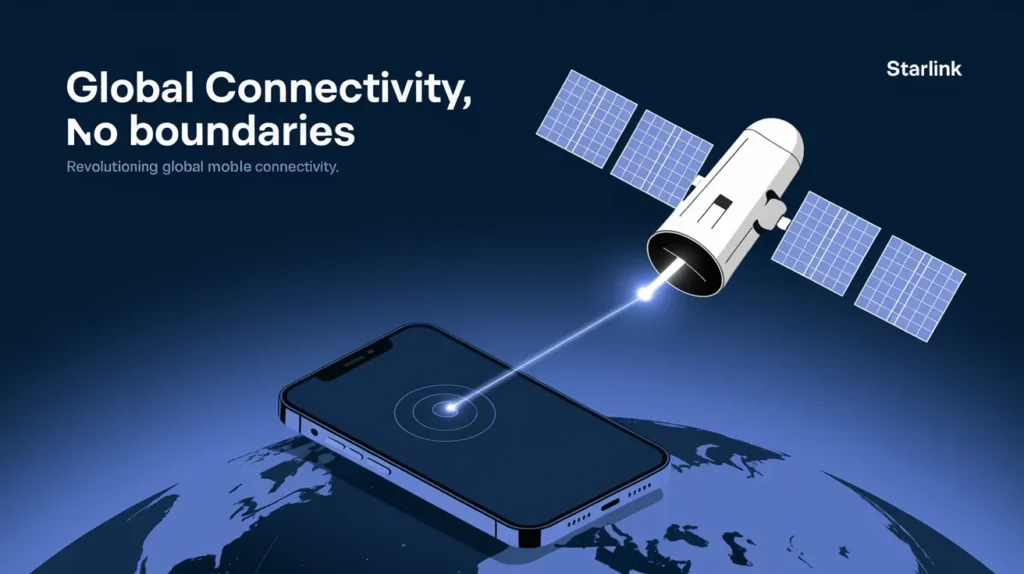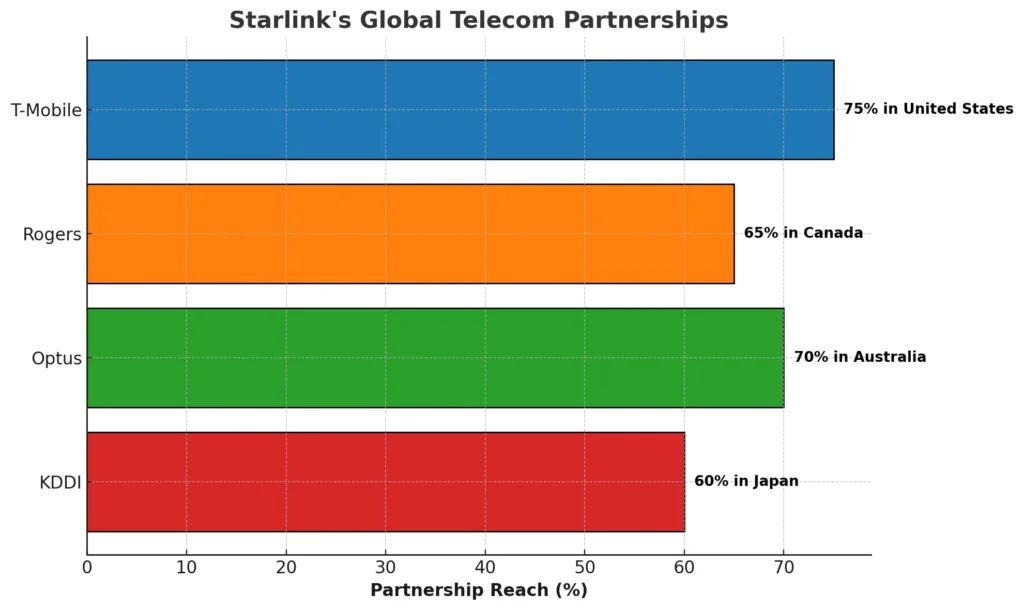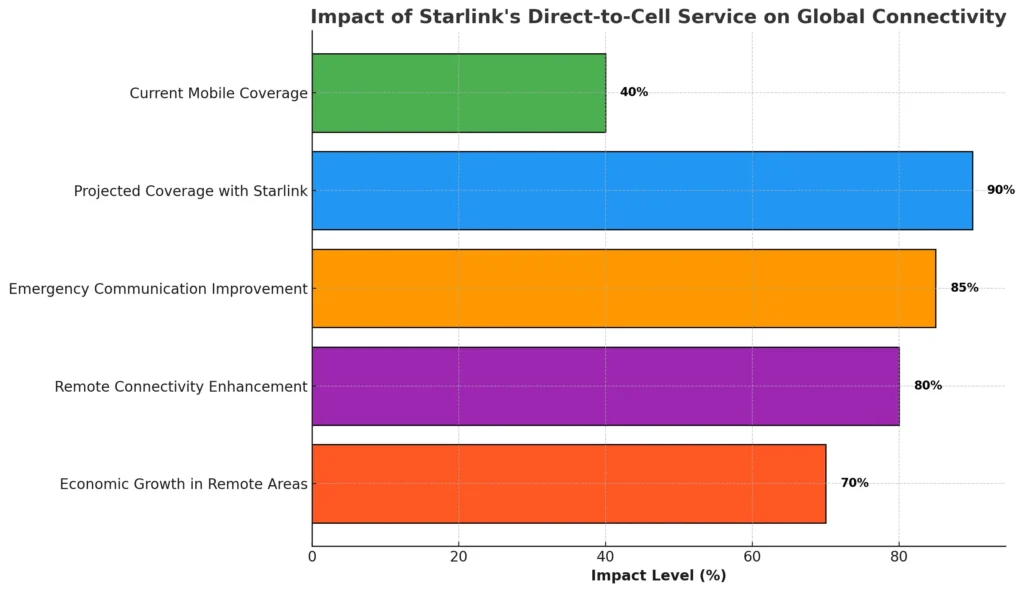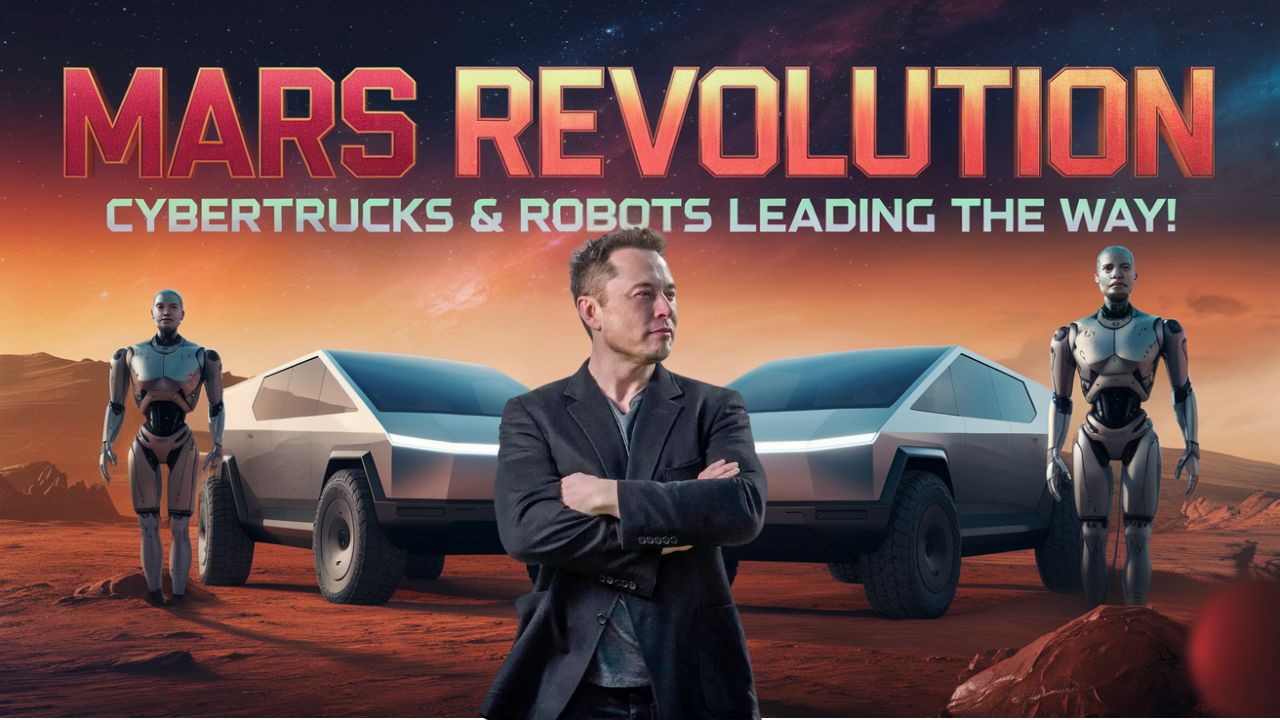In an era where mobile connectivity is vital, Starlink’s Direct-to-Cell service by SpaceX promises to bridge the connectivity gap across underserved areas worldwide. This breakthrough technology enables regular mobile phones to connect directly to satellites, eliminating dead zones and enhancing access in remote and hard-to-reach locations. Here, we explore the revolutionary aspects of Starlink’s new service, the expected rollout, and the far-reaching implications for global communication.
- Shocking Truth: Tesla’s Robotaxi Might Bankrupt Elon Musk!
- AI Powered Humanoid Robots: Why Nvidia, Tesla, Amazon And More Are Betting Big
- Tesla Optimus Robot Gen 3: अब इंसानी दिमाग से कण्ट्रोल होगा AI Robot
- Tesla Optimus Robot Gen 3 + Neuralink: The Dawn of Mind-Controlled Superhumans
The Vision Behind Starlink’s Direct-to-Cell Service
The ambitious Direct-to-Cell service by Starlink aims to change how mobile connectivity works by providing service where traditional cell towers cannot. It operates by allowing cell phones to connect directly to Starlink’s satellite network. This setup bypasses the need for extensive infrastructure on the ground, making it perfect for rural and remote regions. With an expected rollout starting in 2024, this service holds promise for millions in underserved areas, from travelers to residents in remote communities.
Key Features of Starlink’s Direct-to-Cell Technology
- Global Coverage: Starlink plans to provide connectivity worldwide, ensuring that no area is left out, especially rural and remote regions.
- No Additional Hardware Required: Users can connect without needing specialized devices or applications.
- Phased Rollout: Starlink will start with SMS services and expand to voice and data by 2025.
By harnessing its constellation of low-Earth orbit satellites, Starlink aims to offer a seamless experience, connecting billions who have previously faced connectivity limitations.
Expected Timeline and Milestones for Starlink’s Service
The launch of Direct-to-Cell is a phased process, ensuring that every aspect of the service works smoothly. Here is a breakdown of the major milestones planned:
| Milestone | Expected Date | Details |
| SMS Service Launch | 2024 | Initial rollout allowing basic SMS services |
| Voice Service | 2025 | Expansion to support voice calls over satellite |
| Data Service | 2025 | High-speed data availability in underserved regions |
| Partnership with T-Mobile | Active | Major U.S. carrier partnership to ensure wide accessibility |
| Expansion to Other Countries | 2025-2026 | Focus on underserved countries and remote locations |
This roadmap reveals Starlink’s commitment to achieving truly global coverage with reliable connectivity.
How Starlink Direct-to-Cell Will Transform Communication Worldwide
1. Bridging the Connectivity Gap in Remote Areas
For people in rural areas, limited or no mobile service is a reality. Starlink’s service brings hope to these communities, where physical cell towers may not be feasible. By directly connecting mobile phones to satellites, users in these remote areas can access mobile services as easily as those in urban regions. This connectivity boosts opportunities for education, healthcare, and business.
2. Enhancing Safety in Emergency Situations
During natural disasters, traditional cellular infrastructure often fails. Starlink’s satellites, however, remain unaffected by such events, providing a stable line of communication in times of need. Emergency responders, relief organizations, and impacted individuals can benefit immensely from this reliable communication channel.
3. Revolutionizing Mobile Connectivity for Travelers
The Direct-to-Cell service is a boon for those who travel to remote destinations. Adventurers, explorers, and professionals working in isolated areas no longer need to rely on satellite phones or portable hotspots. This service provides a simple, efficient way to stay connected wherever they go.

Challenges and Considerations for Starlink’s Service
Despite its promising benefits, there are some challenges and considerations associated with Starlink’s Direct-to-Cell service:
- Regulatory Approvals: Each country has unique regulations governing satellite services. Starlink must navigate complex legal requirements to expand its services globally.
- Technical Limitations: To ensure reliable service, the satellite network needs to manage potential bandwidth constraints in densely populated areas.
- Environmental Impact: Starlink’s large satellite constellation has raised environmental concerns related to light pollution and space debris, particularly among astronomers and environmentalists.
Starlink is actively working on these issues, aiming to create a service that is beneficial and sustainable.
Starlink’s Major Partnerships for Direct-to-Cell Service
Starlink’s partnerships are crucial to making this service accessible. Here are some of the most significant collaborations:
| Partner | Region | Purpose |
| T-Mobile | United States | Expanding rural and remote coverage |
| Rogers | Canada | Bringing service to Canadian remote areas |
| Optus | Australia | Enabling connectivity in the Australian Outback |
| KDDI | Japan | Enhancing connectivity for underserved areas in Japan |

These partnerships are designed to make Starlink’s Direct-to-Cell service available to a broad audience, ensuring smooth integration with local mobile networks.
Potential Impact on the Telecom Industry
As Starlink gains traction with its Direct-to-Cell service, the traditional telecom industry may face significant changes. Here’s how it could impact the landscape:
- Disruption of Existing Infrastructure: Satellite-based services may reduce the need for extensive cell towers and infrastructure, particularly in remote areas.
- Market Expansion: Telecom operators can use Starlink’s technology to offer more extensive and reliable services, especially in underserved regions.
- New Opportunities for Providers: Telecom companies can partner with Starlink to provide unique services, opening new revenue streams and diversifying their offerings.

As Starlink’s technology evolves, these trends could transform the future of telecommunications.
Comparison of Starlink’s Direct-to-Cell Service with Traditional Networks
To highlight Starlink’s advantages, here’s a comparison of key aspects between traditional mobile networks and Starlink’s satellite-based service:
| Aspect | Traditional Networks | Starlink Direct-to-Cell |
| Infrastructure | Cell towers, fiber-optic cables | Satellite constellation in low-Earth orbit |
| Coverage | Limited by geographic obstacles | Global, including remote and rural areas |
| Connectivity during Disasters | Vulnerable due to physical infrastructure | Reliable satellite-based communication |
| Cost for Rural Areas | High due to infrastructure needs | Lower as satellites eliminate many ground-based costs |
| Device Requirement | Mobile device with network compatibility | Standard smartphones, no modifications required |
The Future of Mobile Connectivity: What’s Next?
With the expansion of satellite-based services, we can anticipate an exciting future where mobile connectivity is truly universal. Starlink’s Direct-to-Cell service could inspire other providers to develop similar satellite-based solutions. Future developments could include integration with IoT devices, providing connectivity for smart devices in hard-to-reach locations, and achieving higher data speeds with newer satellite technology.
Conclusion
Starlink’s Direct-to-Cell service is on the cusp of transforming mobile connectivity worldwide. By directly connecting mobile phones to satellites, SpaceX aims to provide reliable service in areas that have traditionally been disconnected. From bridging gaps in rural areas to offering stable communication during emergencies, Starlink is setting new standards in global connectivity. As the technology matures and overcomes challenges, it could pave the way for a future where everyone, regardless of location, can access mobile services.
- Tesla Optimus Robot Gen 2: A $10,000 Humanoid Robot Revolutionizing the Workforce
- Double-Digit Returns: Real Estate vs. Stock Market vs Property Investment – Which Investment Reigns Supreme?
- AI News and Update: AGI Leaps, Brain Chips, & Miss AI 2024
- Will the iPhone 16 Be Worth the Upgrade?
FAQ Related To Starlink’s Direct-to-Cell service
Starlink’s service allows mobile phones to connect directly to satellites instead of relying on ground-based cell towers, providing coverage in remote and hard-to-reach areas.
The service is expected to begin with SMS capabilities in 2024, with voice and data services to follow by 2025.
Key benefits include eliminating dead zones, enabling emergency communication in disaster-affected areas, and providing connectivity in remote locations without requiring additional hardware.









